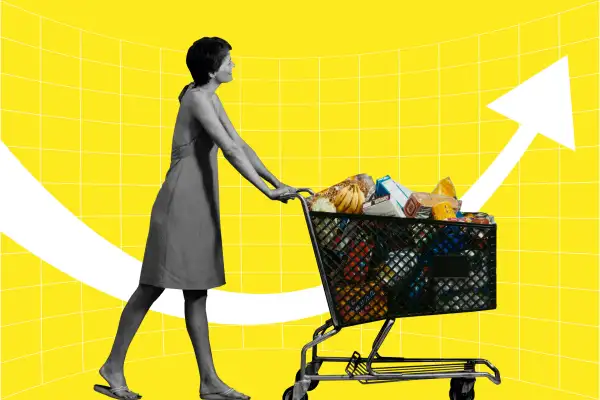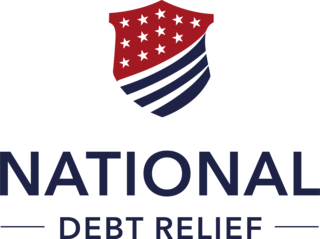Grocery Stores Have Hiked Prices Beyond Inflation — and Their Stocks Are Soaring
Money is not a client of any investment adviser featured on this page. The information provided on this page is for educational purposes only and is not intended as investment advice. Money does not offer advisory services.

If you've stepped foot inside an American supermarket in the past few years, there's a good chance you've experienced sticker shock. But shareholders of the country's largest grocery chains are singing a different tune.
Food prices — along with energy prices — are historically volatile and therefore stripped out of the U.S. Bureau of Labor Statistics' core Consumer Price Index (CPI) reading each month. So when July's core CPI print of 3.2% came out in August, that figure didn't tell us much about what's been happening with grocery prices specifically.
The BLS tracks food prices separately, and according to its data, the pace of food inflation has actually slowed. Drilling down into the various food categories, however, tells another story — one that's helping the stocks of publicly traded companies in this space appreciate significantly.
Food inflation is sticky
Despite dairy products, fruit and vegetables having seen year-over-year disinflation of 0.2%, other subsets continue to put pressure on Americans' household budgets. Nonalcoholic beverages, for example, rose 1.9% over the same period; meats, poultry, fish and eggs saw price increases of 3.0%.
While some of those figures are lower than the broad CPI reading of 2.9% in July — which does include food and energy prices — zooming out paints a different picture. Federal Reserve Economic Data maintains an index of the U.S. city average for food at home. The index, which remained mostly flat from 2010 to 2019, has increased a whopping 26.43% since the start of 2020.
And as analysts and supermarket executives argue that supply-chain disruptions and increased labor costs are the primary driver of food inflation, they often fail to address allegations of how corporate greed has contributed to all-time high revenues that unjustifiably exceed profit margins. In April, Robert Reich, the former secretary of labor under President Bill Clinton, posted on his website that "we’re seeing this pattern across much of the economy — especially with groceries."
Reich, who studied antitrust law at Yale University, added that despite inflation having subsided, "consumer prices are still up, allowing most corporations to keep their profit margins near a 10-year high."
Prices surpassing inflation
In a March report, the Federal Trade Commission found that food retailers' profit margins exceeded the costs they passed along to consumers both during and after the pandemic at rates that could not be rationalized by supply-chain disruptions or wage increases.
Grocery chain profits spiked 11% between 2021 and 2022; they have yet to come down. Specifically, the FTC noted that "data indicates that one measure of annual profits for food and beverage retailers — the amount of money companies make over and above their total costs — rose substantially during the pandemic and remain quite elevated," adding that "this profit trend casts doubt on assertions that rising prices at the grocery store are simply moving in lockstep with retailers' own rising costs."
Costco, for example, saw its profit margins increase from 12.2% in 2022 to 12.3% in 2023, with a trailing 12-month reading of 12.5% into 2024, according to Morningstar data. Since 2019, the company's revenue has grown by more than 66% while its net income (aka profit) increased nearly 96%.
And despite some companies continuing to point the finger at supply chains and labor costs, one store was recently forced to admit that it was price-gouging its customers. During Kroger's antitrust trial in August, its senior director for pricing, Andy Groff, acknowledged that the grocery giant had raised its prices for certain food staples — like eggs and milk — after the FTC presented evidence of an internal email written by Groff stating "retail inflation has been significantly higher than cost inflation" for those items.
Kroger's antitrust lawsuit is the result of its attempted acquisition of Albertsons, another food retail giant. If the $24.6 billion acquisition is ultimately permitted, Kroger would operate 5,000 stores and 4,000 pharmacies with 700,000 employees across 48 states.
The outcome would be a $50.08 billion market cap company that, according to the FTC, would exacerbate anticompetitive practices. The FTC says executives from the two companies have admitted that they would no longer have to "aggressively compete for customers by lowering prices and for employees by providing better pay and benefits across the country" and have conceded that the planned acquisition is anticompetitive, with one executive allegedly having stated that "you are basically creating a monopoly in grocery with the merger."
Grocery chain stocks continue to surge
Between the run-up in prices for food staples and record-high revenues for retailers, it's no surprise that the stocks of companies operating in that sector are not only performing well but in some cases outperforming the market. Over the past five years, the S&P 500 has gained nearly 86% largely on the back of the Magnificent Seven, a group of tech companies whose massive market caps have an outsized impact on the benchmark index.
For comparison, shares of Ingles, a supermarket chain in the Southeast, have gained more than 84% over the past five years. Walmart — America's largest grocer — has seen its stock rise 102% since 2019. During the same period, Kroger's stock has gained more than 117% and shares of Costco are up over 190%.
The winner, by far, is Arizona-based Sprouts, which has seen its stock increase by an astounding 445% over the same time frame.
According to Grand View Research, the grocery retail market in the U.S. is expected to expand at a compound annual growth rate (CAGR) of 3.2% from 2024 to 2030. However, with food companies now openly admitting to anticompetitive practices and price-gouging, both of which will continue to fortify record profits, their stocks could continue to markedly outperform the overall grocery retail industry's CAGR.
More from Money:
This New Investing Trend Can Double the Returns of Single Stocks — but It's Risky
Here's How to Rebalance Your Investments Ahead of (and During) Retirement





